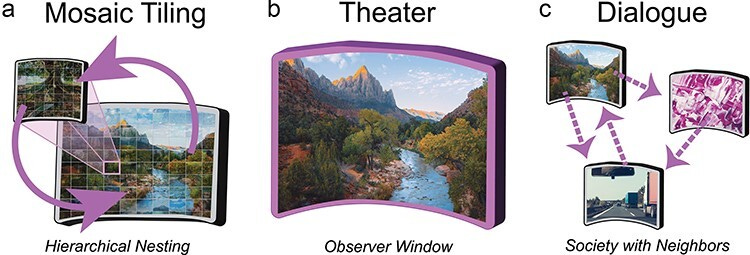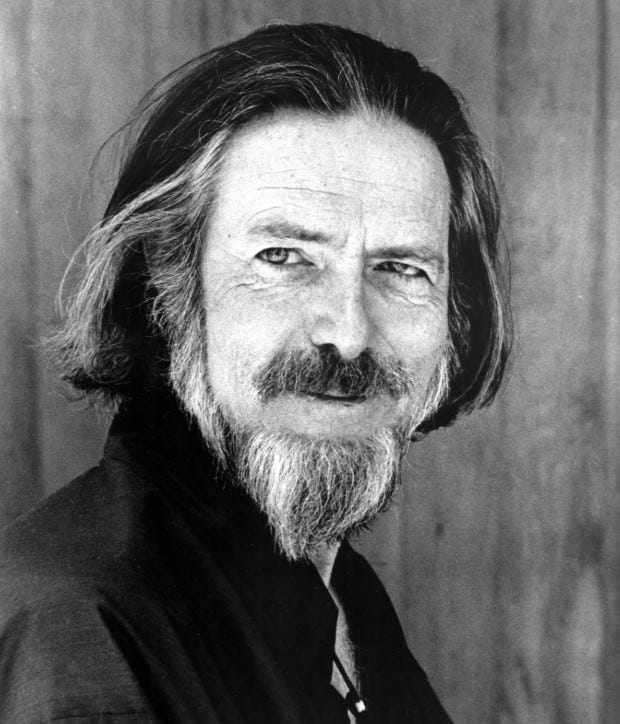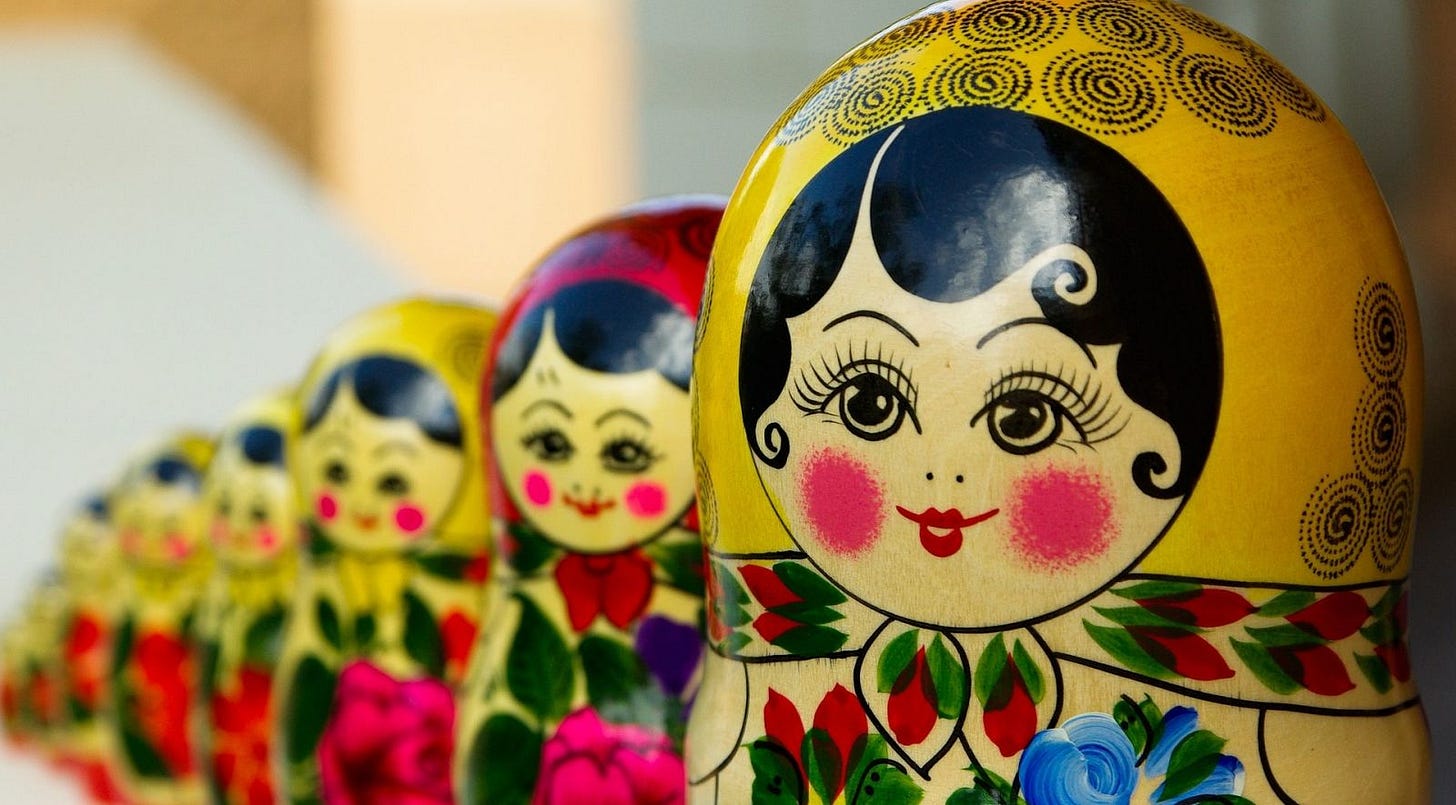The Universe Might Be Thinking Through... Your Tongue?! Why Your Cells Could Be Conscious: The Nested Observer Window Theory of Consciousness
Welcome to The Consciousness Cartographer, where the edge of science meets the beginning of the universe. Subscribe to explore the frontier of mind, matter, and meaning, and discover how the universe might just be waking up through you.
So if your body isn’t just a collection of organs that happens to produce a singular conscious experience…
What is it?
Some say it could be a community of tiny minds… that individually and collectively each produce different conscious experiences!
In this week’s interview (linked at the end of the article), I had the pleasure of speaking to Dr. Jonathan Schooler, a cognitive sciences professor at the University of California Santa Barbara, where he shares his fascinating theory of consciousness called the Nested Observer Window (NOW) Theory.

His theory suggests that consciousness could exist in layers, from the smallest cell to your tongue to the entire self.
So is your tongue conscious, experiencing something beyond words that we can describe?
Let’s find out.
Here’s a concise breakdown of my 1-hour conversation with Dr. Jonathan Schooler.
Key Takeaway #1: Entertaining Without Endorsing
Early in life, Schooler read the book “The Book on the Taboo of Knowing Who You Are” by Alan Watts, the famous philosopher.
And he highly recommends it for several reasons.
There was this line that never left him, which was:
“God also likes to play hide-and-seek, but because there is nothing outside God, he has no one but himself to play with. But he gets over this difficulty by pretending that he is not himself. This is his way of hiding from himself. He pretends that he is you and I and all the people in the world, all the animals, all the plants, all the rocks, and all the stars. In this way he has strange and wonderful adventures”
- Alan Watts
This passage became more than a playful metaphor, inspiring Schooler’s search for meaning.
He admits that if divinity exists, it is probably playing hide and seek with itself.
Otherwise, it would be completely bored with knowing how everything unfolds.
No capacity to learn, grow, or evolve.
And this leads to his other philosophy on life: everything that Schooler suggests (yes, even his NOW theory), he frames under the conditions of “entertaining without endorsing.”
He calls this stance ontological humility.
The willingness to explore reality’s deepest questions without claiming absolute answers.
He admits this because the universe might be stranger than either science or religion currently allows.
Which brings us to consciousness.
Key Takeaway #2: Consciousness Vs. Intelligence
For Schooler, one of the most dangerous confusions in modern discourse is the belief that intelligence equals consciousness.
AI may be intelligent in the computational sense, e.g, it can reason, generate, predict, but it might still be as hollow as a mirror.
“A painted Russian doll,” he says: perfect on the outside, empty within (no inner dolls).
Consciousness, therefore, is not the ability to calculate.
Consciousness is the capacity to feel.
Like a russian doll with many inner dolls.
The experience of things such as pain, darkness, beauty, awe, and boredom.
It is an experience of the inside of reality.
The question, then, isn’t “Can AI think?” but “Can it experience?”
For example: You’re reading a paragraph of a book, and then suddenly you realize…
You weren’t really paying attention.
Happens to me way too often :)
That moment of realization is meta-awareness: awareness of being aware.
Schooler says this is the hinge of consciousness.
Why?
Because meta-awareness enables change.
It’s what allows you to notice you’re angry before you act, to see you’re distracted before you drift, to choose how you want to be.
And it scales.
Schooler argues that when a society becomes aware of its own biases, its own shadows, it can evolve past them.
As Schooler puts it: “Meta-awareness is where agency begins.”
Moving beyond our individual and collective limits.
Which brings us to his NOW theory…
Key Takeaway #3: The Mind as a Mosaic
In his Nested Observer Window (NOW) model, Schooler uses a mosaic photograph as a metaphor.
Zoom out, and you see a single image.
Zoom in, and every pixel is another photo, which itself is made of smaller images, a fractal of perception.
He argues that consciousness may work the same way.
Each “window” of awareness — from a cell to a person to a culture — has its own limited but coherent experience.

One of the relatable examples is your tongue.
Schooler argues that it can “decide” how to move while speaking without your conscious micromanagement, yet you can take control if you focus on it.
That’s two windows — the tongue and the apex “you” — communicating through attention.
The mind, then, instead of a single commander giving orders, is more like a self-organizing orchestra, where harmony comes from everything resonating together.
And there are layers to these windows that include:
Lower windows (like organs or subsystems) operate on fast loops
Example: Schooler points out that organs such as your kidneys aren’t just filtering blood; they might be experiencing their own micro-world of awareness, sensing chemical shifts, communicating with neighboring cells, and responding intelligently to your body’s needs.
Higher windows integrate them more slowly but with a wider scope

In the NOW model, your mind is made of many “windows” of awareness stacked like layers in a tower. Some scientists think only the top window is truly conscious, others think several higher ones are, and some imagine that every window—big or small—has its own tiny spark of awareness. Example: Like your sense of self, process information more slowly but see the bigger picture - combining thoughts, emotions, and sensations into one experience. I, being Jason, am aware of my body posture, mood, and energy levels, not eating breakfast today :)
Consciousness is the dance between these loops

Your brain works like a mosaic of lights and rhythms where slow waves set the beat while faster ones dance along, helping different parts talk to each other. The higher levels can guide the lower ones, but only gently, so each layer still has its own freedom to shine. Example: Attention shifting like a mosaic of smaller and larger awareness loops syncing and unsyncing to create what you feel right now
It’s an elegant way to explain why “mind” feels both unified and divided, deliberate and automatic… because it is both.
And that could scale all the way up our collective society.
Key Takeaway #4: Things Science Can’t Explain But Must Include
Schooler points out that, despite its advancements, modern science has no real place for four self-evident truths:
Experience happens (it exists)
It unfolds in time (it moves forward)
It is always now (it’s present)
It responds to choice (free will)
Physics, as currently built, explains none of these.
In relativity, time doesn’t flow. All moments coexist in a static “block universe.”
In neuroscience, free will is dismissed as an illusion generated after the fact.
And subjective experience (the what-it’s-like to be you) is hand-waved away as a “hard problem” or, worse, a hallucination.
Schooler’s counterpoint is simple: these four features are not optional add-ons to existence; they’re the essence of it.
If your model of reality can’t accommodate the most certain thing you’ve ever known, then the model, not the experience, is incomplete.
Key Takeaway #5: Tying The Kite All Together
Then came the moment I scratched my head.
Schooler suggests:
What if we’re not the ones moving through time…
What if time moves through us?
What?!
He helped me understand by imagining a kite. Each panel is a window of consciousness: a neuron, a cell, a person, a collective society.
The wind is objective time flowing through it.
Each panel flutters at its own rhythm, yet all are tethered together.
The kite holds. It moves as one.
Now imagine you, a single panel, shifting slightly.
The angle of your awareness changes the tension on every other string.
In this view, individual consciousness becomes participatory rather than isolated.
Your smallest act of attention subtly shapes the whole.
Conclusion
Jonathan Schooler’s NOW theory offers a humbling, almost poetic way to look at consciousness.
Maybe the mind isn’t a single voice in the head but a chorus: each part of us, from cells to thoughts, aware in its own small way and woven into a larger field of awareness.
Perhaps that’s the quiet message behind Schooler’s work: that the universe doesn’t just contain consciousness.
It is consciousness, discovering itself through each of us, one window at a time.
Curious about where science ends and consciousness begins?
Subscribe to the Consciousness Cartographer and explore the edge where the universe starts thinking through you.
Watch my full interview with Dr. Jonathan Schooler here.
References:
https://pmc.ncbi.nlm.nih.gov/articles/PMC10949963/










I love "ontological humility." It's how I live my life, and now I've got a clever phrase for it.
I love that you said that.
Ontological humility feels like the bridge between wonder and wisdom —
staying curious enough to question, and quiet enough to listen.